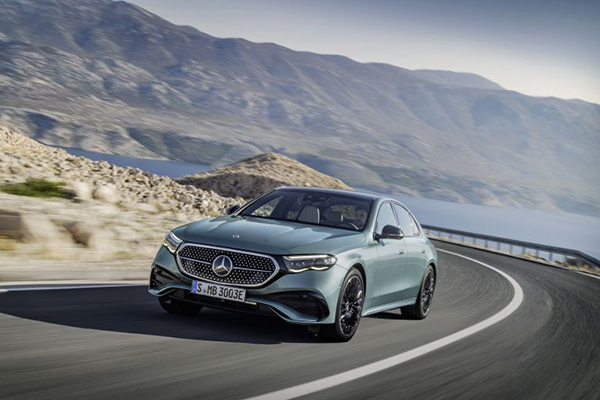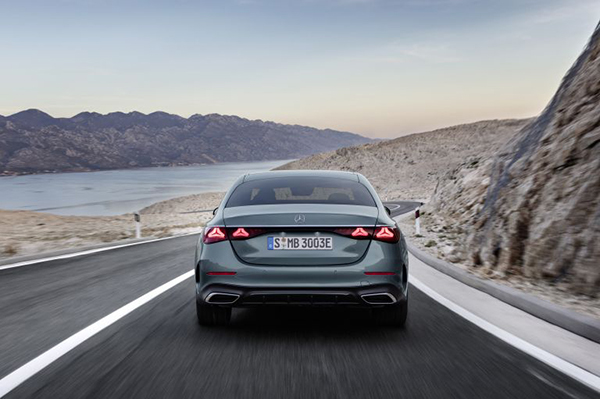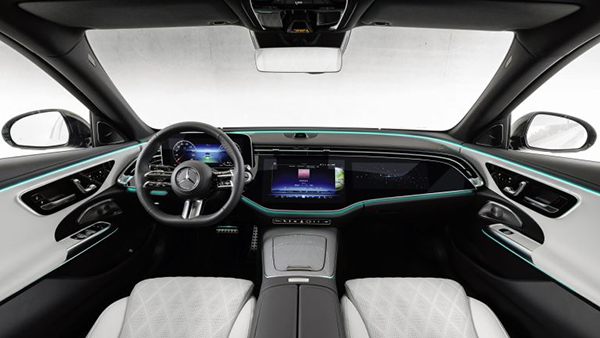The sixth-generation Mercedes E-Class has arrived, and some significant improvements have been made to the long-running executive saloon car, which will rival the new BMW 5 Series.

Every powertrain available in the new E-Class is electrified, following the example set by the facelifted GLE SUV. However, unlike the forthcoming 5 Series, there’s no all-electric version; that alternative is provided by the similarly sized EQE model.
When it comes to design, the new E-Class is an evolutionary step over its predecessor. It incorporates styling elements from the S-Class and EQE models – especially the new-look grille (which can be backlit as an option) and gloss-black surround. Slimmer LED headlights and tail-lights – the latter featuring a three-pointed star signature – also feature.
The latest E-Class has grown in every direction, resulting in more room inside, according to Mercedes. The boot capacity remains 540 litres for combustion-engined models and 370 litres for PHEV cars.
A drag coefficient of 0.23Cd should help boost efficiency, and for a further lift, the car’s wheels (ranging from 17 to 21 inches, depending on spec) are aerodynamically optimised. The latest E-Class also features flush-fitting door handles and an active radiator grille, which can close to reduce drag when cooling requirements are reduced.

Cementing the E-Class’s image as a luxury-focused choice in the executive segment, a lot of the new car’s tech is inspired by the larger S-Class. The big news is the E-Class’s optional ‘Superscreen’ dash. It’s essentially a smaller version of the Hyperscreen seen in the EQS and S-Class, and is powered by the latest MBUX infotainment. The design is similar, with a large central screen and two panels either side for each front occupant.
Safety systems include active blind-spot and brake assist, while the E-Class is now available with automated valet parking.
When it comes to powertrains, the new E-Class is offered with mild-hybrid or plug-in power, with all models receiving a nine-speed automatic transmission. Mild hybrids start with the 201bhp E 200, which uses a 2.0-litre four-cylinder petrol engine that’s boosted by a 23bhp electric motor.
Diesel power comes in the form of the 194bhp 2.0-litre four-cylinder E 220 d mild hybrid, which is claimed will return 58.9mpg. This can be had with either rear-wheel drive or 4MATIC four-wheel drive.

Plug-in versions of the E-Class can travel up to 73 miles on electricity, courtesy of a 25.4kWh battery and an electric motor, backed up by a 2.0-litre four-cylinder petrol engine. The E 300 e offers a total power output of 312bhp, or there’s 381bhp in the E 400 e. An E 300 de diesel PHEV will join the line-up at a later date.
Despite the longer wheelbase of the new E-Class, the turning circle is smaller than the outgoing model’s 11.6 metres. The optional Technology package includes rear-axle steering that can add 4.5 degrees of angle, reducing the turning circle to 10.8 metres. Airmatic air suspension with adjustable dampers is also included.
Pricing for the new E-Class has yet to be confirmed, but expect the saloon to start from around £50,000 when it goes on sale later this year. The E-Class Estate will also return, while the UK line-up will be offered exclusively in AMG Line trim.
2024 Mercedes-Benz E-Class Looks To The Future
26/04/2023
No Comments
Mercedes-Benz | Mercedes-AMG
Click to rate this post
[Total: 1 Average: 5]